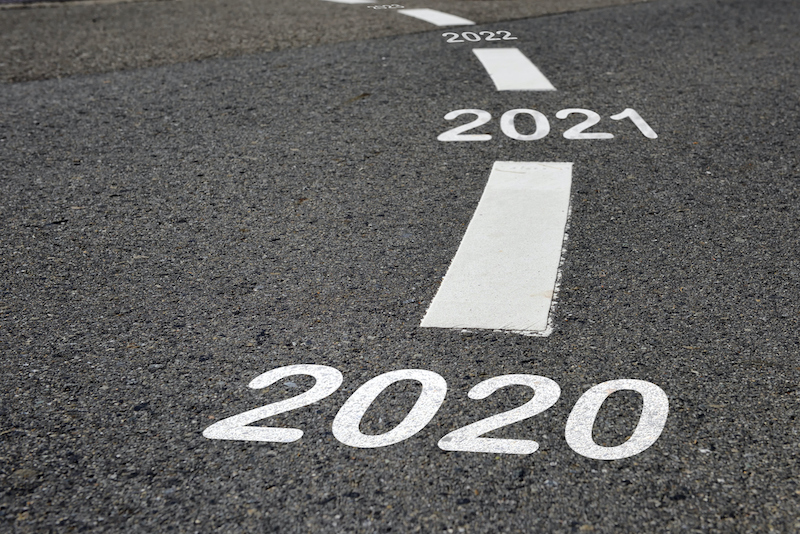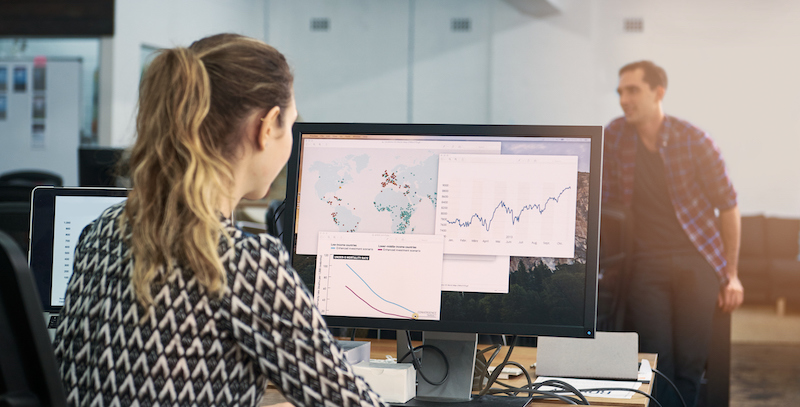How can GIS professionals and businesses leverage GIS technology as a key component of their strategies? Two words: Social media.
The reach of social media is so massive that it’s become a driving force in daily living. Today, a whopping 72% of the public uses social media in some way.1 What’s more, those same users heavily influence cultural preferences, trends, media and other society shapers. Social media activity is a daily glimpse into the collective human psyche, and the data it produces is a gold mine for GIS professionals.
Social Media Mapping: The Geography of Trends
Social media mapping visually reflects patterns of connection that form between people online. It’s based on data gathered when social media users take some kind of action — following, replying, liking, tagging and so on.
How the connections are clustered points to those topics of social media relevance in defined areas that vary from local to worldwide. Ultimately, it’s the “big data” that app developers extract from social media platform databases that help organizations identify geographic trends and use it to make key decisions.
Real-Time Analytics for Real-Time Action
Having real-time social media data means real-time analysis and application for data scientists. Mapped social media posts across platforms combined with GIS data are instrumental in helping organizations detect, define and address events of different degrees, as in these examples:
- City highway commissions may use the information to understand and resolve traffic congestion issues
- Government officials can use some of this data for urban planning
- Government agencies may leverage certain data to follow and appropriately respond to national or international events
- Public health officials could get ahead of the spread of illness by tracking where sickness is centralizing and allocating medications to those areas
How Can This Data Help Businesses?
Since data helps create informed decisions, marketing and sales efforts can be unified around growth initiatives like improved customer experience, viable new opportunities and maximizing marketing impact.
Following applicable privacy laws, organizations can blend the worlds of social media and mapping data to help drive vital business decisions — especially in the realm of geomarketing.
Knowing the Audience
Social media posts, reviews, location tags and more offer information about a business’s audience. Demographics, likes, dislikes, frequently visited establishments — these social media activities can be used to feed map data that provides valuable insights into a company’s target audience and help inform strategies.
Finding Key Business Regions
Where are people traveling? Where are people never going? A business may garner key information on high-traffic locations and travel routines that could help lay the groundwork for geography-influenced marketing campaigns or desired expansion locations.
Targeting Campaign Areas
Maybe it’s pay-per-click advertising. Perhaps it’s sending a coupon to a user in the vicinity. In either case, geographic data compiled from social media posts is a massive help. When combined with interests and other demographics, highly personalized ads can be developed and used in different marketing plans.
Analyzing Competition
Analyzing customer social media posts is a key element in checking the competition. People may be snapping pictures of or tagging themselves at competing locations.
What are those competitors doing to attract customers who want to show their followers what they’re doing on a Friday night? And where are those customers coming from? This location intelligence can go a long way.
Managing Reputations
Seeing locations of some social media conversations may be able to help businesses address trouble spots and ensure they’re helping customers when (and where) needed, not to mention see how the brand is doing in each location.
The Role of GIS Professionals
Social media mapping and geographical insights are critical for decision makers, but GIS professionals give structure to the decisions with actionable analytics. It’s a matter of providing contextual knowledge using GPS devices and other monitoring tools so the data can precisely answer the “when” and “where” of events, rather than simply filling a spreadsheet.
Geospatial data analysis is increasingly more important, and artificial intelligence (AI) is playing a larger role in the process. Click the link below to download a copy of our eBook, The Fundamentals of Geospatial AI, to learn more about the benefits of geographically driven intelligence, AI-based algorithms and more.
SOURCES
1Pew Research Center, Social Media Fact Sheet, April 7, 2021.
Subscribe to ADCi's Blog
Related Posts

How GIS Professionals Can Leverage Speed Limit Data Sets

The Year in Review: ADCi’s Most Popular Blog Articles of 2020

